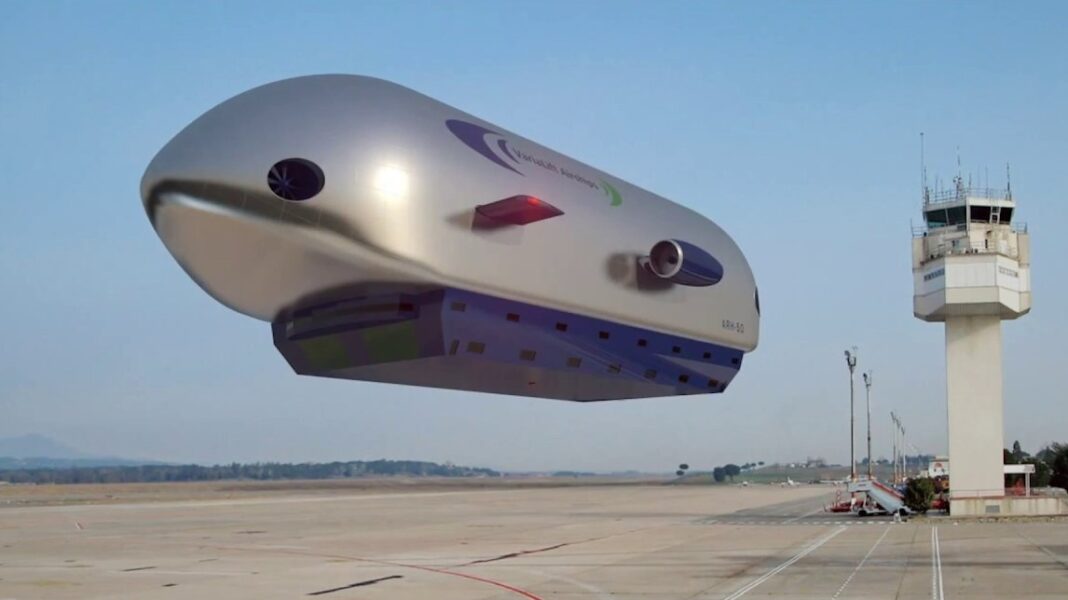Rigid airships were popular at the beginning of the 1900s to the end of the 1930s. They became widely known as Zeppelins by the name of one leading airship building company (at the time) called Luftschiffbau Zeppelin.
However, they have not been completely forgotten and Zeppelins may write yet another page of history (and future). The UK based company “Varialift Airships” is working on new aluminium-shelled, solar-powered airships.
The prototype is currently being built in France. It would be 140 meters (459 feet) long, 26 meters (85 feet wide) and and just as high. The first generation of Varialift airships will be powered by standard aero engines, but the rigid aluminium exterior offers the potential for power to be supplied by solar batteries on later models. No energy is required for the airship to rise above the clouds as it lifts off more like a balloon than an aeroplane, but the speed would vary depending on the solar power availability. The estimate is that the maximum speed would be around 400-500 km/h (250-310 mp/h).

The CEO of the company, Alan Handley, believes that the airship would be capable of making a transatlantic flight from the United Kingdom to the United States, consuming just 8% of the fuel of a regular airplane. It would be powered by two solar-powered engines and a pair of conventional jet engines.
The primary goal of this airship is to be used as a heavy/bulky cargo carrier, especially in difficult to reach places as it does not require a dedicated runway. The first models would probably be able to carry somewhere between 50 and 250 tons, but larger variations could potentially lift cargo weighing up to 3,000 tons. It could be very useful for big cargo like wind turbine blades, electricity pylons, nuclear reactor pressure vessels and even prefabricated structures such as oil rigs.
The creators say that there is a potential for the airships to be also used as static, manoeuvrable communication platforms (pseudo-satellites). The advantages of such a project would be little or no launch cost, payload reparability/upgradeability, zero interference from other platforms, manoeuvrability, much less signal latency than geostationary satellites, and vibration-free launch.













